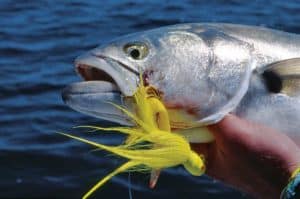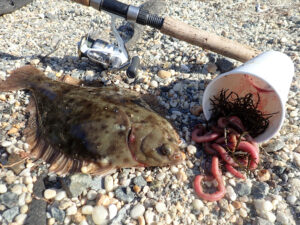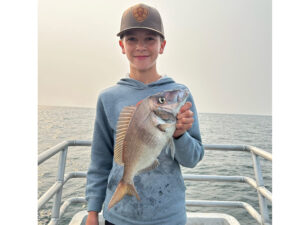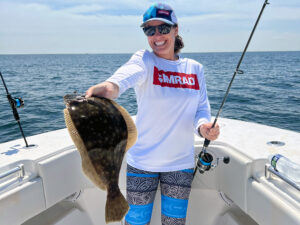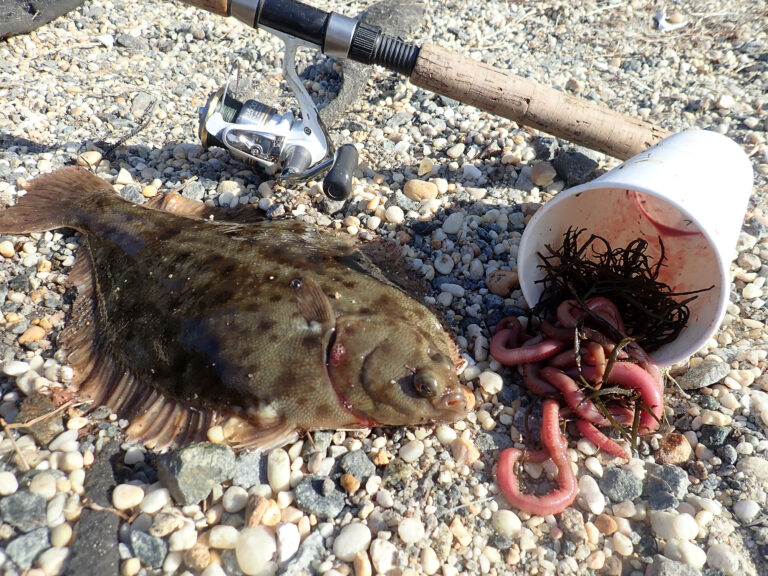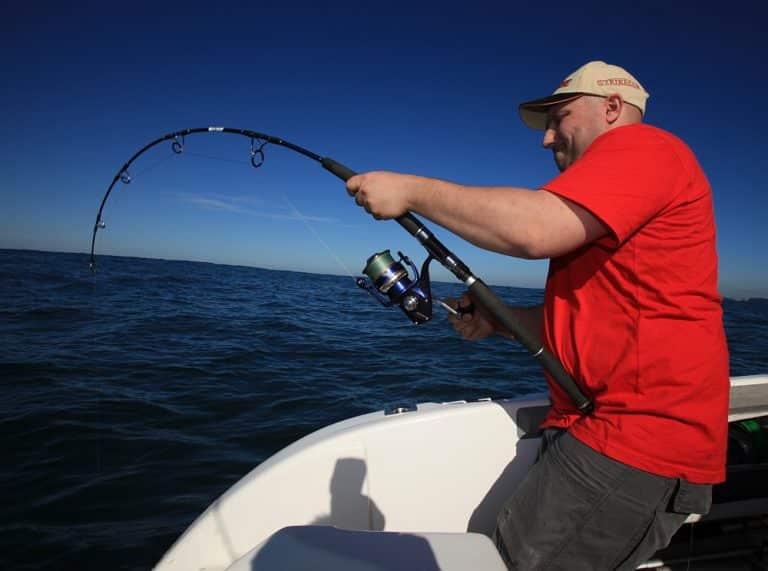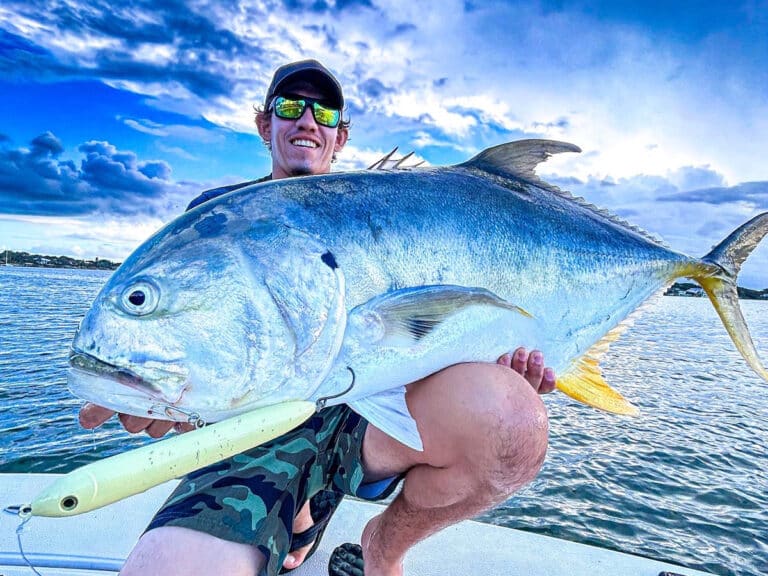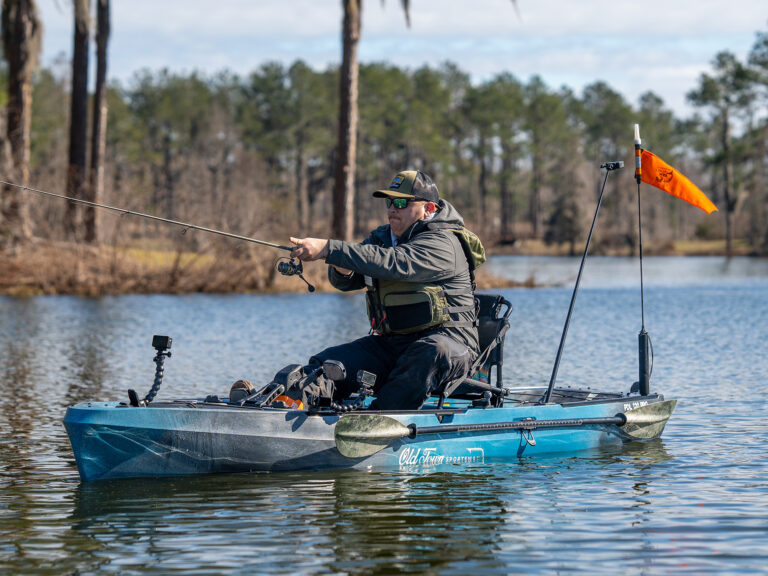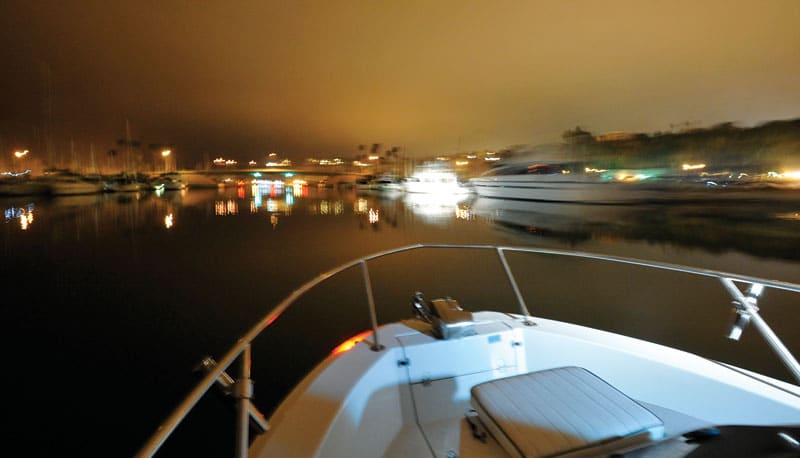
At some point in your saltwater-angling career, you’ll end up on the dark side — afloat on a boat at night. That adventure could take the form of a predawn offshore run, casting to snook under evening dock lights, or spending the night in a remote anchorage.
When the sun goes down, you lose one of your most critical navigational tools: good visibility. Experienced skippers compensate for that factor in a number of ways, from increasing caution and decreasing speed to using electronics and night‑vision technology.
Slow and Vigilant
There’s a nautical saying: Be a pro, go slow. This applies even more in the dark, because objects might not come into view until they’re fairly close. Slowing the boat’s speed gives you time to identify hazards such as crab-trap buoys or an unlit boat so you can maneuver around them to avoid collisions.
Just how slow depends on the visibility, but when in doubt, reduce your speed even more. Also while under way, keep additional crew on watch, as you can’t have too many eyes at night, and encourage all to speak up if they spot something. Companionship on the bridge also helps you stay awake, especially when running on autopilot. While on anchor, keep at least one crew member on watch, rotating shifts throughout the night.
You can improve everyone’s vision at night by minimizing onboard illumination. In the darkness, the pupils of your eyes eventually widen, and the retina becomes more sensitive to low light. However, onboard illumination such as an errant flashlight will destroy your night vision, and it will take about a half-hour to reacquire it.
If you need illumination, red light is best, as it tends not to desensitize your eyes. Also, many boat instruments and electronics have dimmers to reduce the backlighting and help preserve night vision. Of course, you need to keep your navigation lights on all the time so other boaters will be able to see you.
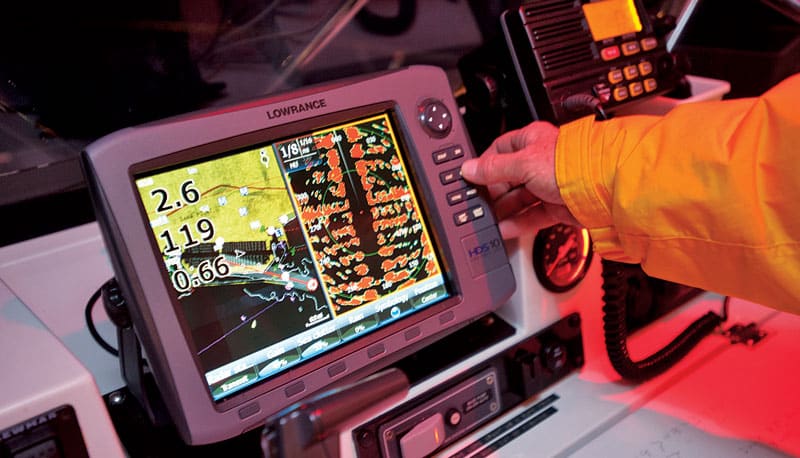
Electronic Eyes
Without strong visual cues, you can easily become disoriented on the water. But today’s marine electronics help keep you clued in. One of the most basic is a GPS/chart plotter with detailed electronic cartography — from company’s such as C-Map (c-map.com) or Navionics (navionics.com) — to show your boat’s position and course relative to fixed objects above water. Chart plotters can also indicate shoals or partially submerged reefs ahead.
Radar picks up where chart plotters leave off, not only showing fixed objects but also boats and other uncharted targets. Setting the guard-zone feature on your radar will alert you of nearby targets with audible and visual alarms.
With multifunction electronic displays from companies such as Furuno (furunousa.com), Garmin (garmin.com), Geonav (geonavmarine.com), Lowrance (lowrance.com), Raymarine (raymarine.com) and Simrad (simrad-yachting.com), you can also overlay radar on an electronic chart display to give you the best of both on a single screen. This requires the addition of a heading sensor.
Another useful electronic tool is an Automatic Identification System, available from most of the companies mentioned earlier, plus Si-Tex (si-tex.com), Standard Horizon (standardhorizon.com), Icom America (icomamerica.com) and Vesper Marine (vespermarine.com). This system displays the identification, position, course and speed of other AIS-equipped vessels. The data is relayed over a VHF radio band and can be overlaid on a chart-plotter screen. However, not all vessels have AIS, so it should be used only to augment other tools such as radar.
While electronics can be indispensible at night, avoid becoming so preoccupied with them that you take your eyes off the water for any length of time while under way. If, for example, you need to adjust the radar scale or study the electronic chart, throttle down.
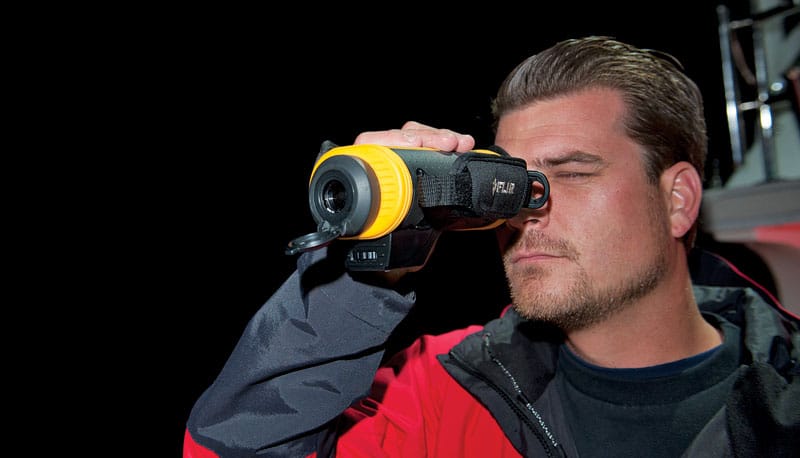
Night Scopes
Two technologies enhance your own eyes in the dark. One takes the form of light-amplification scopes and binoculars sold at a wide range of prices. Everything’s cast in ghostly green hue, but it helps you survey a dicey inlet or gnarly shore. Most of the units on the market come from Russia, but a German company, Minox (minox.com), creates a lower-cost miniature viewing scope — the NVD mini ($299). Few of these scopes are designed expressly for saltwater use, so keep them out of the weather.
The other vision-enhancing technology for boaters is thermal imaging, which detects relative heat to display a two-color picture through a scope or camera. Thermal imaging can operate in total darkness. FLIR Systems (flir.com), Raymarine and Garmin offer a number of marine thermal-imaging products, including fixed-mount remote-control cameras and handheld scopes. The most affordable is FLIR’s First Mate MS-224, which retails for $1,999.
Spotlights
Sometimes you need a bright light, like when you’re trying to identify a nearby navaid. This is when a spotlight or searchlight comes into play. There are two basic types — fixed-mount units with remote controls on the bridge (good for boats from 26 feet up), and handheld models (better for smaller boats).
Use spotlights sparingly. The sudden intensity of the light might spook fish. And, more important, the glare can ruin acquired night vision — yours as well as that of nearby boaters.
Ever wonder why boats don’t have headlights, like those on cars? It’s because in open water, light reflecting off waves and mist is blinding. To see for yourself, try shining a spotlight ahead of the boat while under way in open water at night. Then you’ll understand why boats don’t have headlights.
Fish feed according to tides and currents, with no regard for the hands of a clock. Following them may well take you into the night. With prudent navigation and the right electronics, you can fish safely on the dark side.

